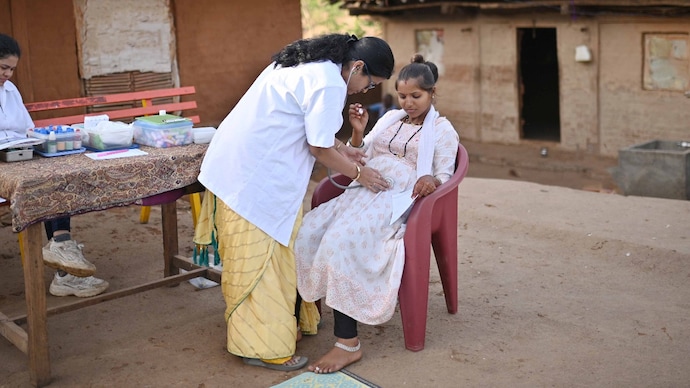Tobacco before breakfast: a daily ritual for new mothers in Bhubaneswar slums
A study of the slums of Bhubaneswar highlights the broad use of smoking tobacco among women. This habit pose a serious health risk for both mothers and their children, which immediately asks for community-focused interventions.

When we talk about the dangers of tobacco, most people imagine cigarettes. But there is another form of tobacco – tobacco -free tobacco (SLT, which is quietly taking heavy toll on women’s health, especially in poor communities in India.
Like product Paan, Khaini, GutkhaAnd Gudgery Widely consumed, and for many women, they are a everyday habit.
A new study by scientists at the Indian Council of Medical Research-Regional Medical Research Center makes a headlines on the slums of Bhubaneswar, just how deep on this practice, and how dangerous it can be for both mothers and their children.
Tobacco without smoke, but not without loss
Smoking tobacco (SLT) is often considered safe than smoking. After all, there is no smoke, no irritation, and no cough is fit.
But the truth is, it is far from harmless. The SLT contains nicotine and other harmful chemicals that directly affect a woman’s body, and when she is pregnant, they go to the developing child.
Doctors have long known that the use of SLT during pregnancy increases the risks of preterum births (very early infants), Stillbarth (child loss before birth), low birth weight (child -born children born and weak children) and young children (infants should not grow in Womb) for pregnancy age.
Nicotine, addictive chemicals in tobacco, crosses the placenta and reaches the fetus.
It can damage the development of the brain, affect breathing control, disrupt hormone balance and develop slow.
Danger does not end after the child’s birth, the use of tobacco during breastfeeding can reduce the protective quality of breast milk, which can make infants more unsafe for infections and developmental problems.
What was found in the study of Bhubaneswar
In a study conducted in slum areas of Bhubaneswar, 40 women – 22 pregnant and 18 breastfeeding were interviewed, who were regular users of smoking tobacco.
They were all consuming these products for more than a year, and many have been using them since adolescence.
Some of the major conclusions were striking:
initial startup: On average, pregnant women started using tobacco at the age of about 15, while breastfeeding mothers also started earlier at the age of 12.
Comprehensive dependence: About half pregnant women (45%) and more than half of the breastfeeding women (55%) reported tobacco in the morning.
Popular Products: Paan, KhainiAreka Nut, Gundi, Dupa, GudgeryAnd Gutkha The most common options were.
Economic effects: Women often chose products on the basis of ability, in which cheap options become Go-to during financial stress.
Major causes of use: The influence of a colleague and family, relief from stress, pregnancy related crawings, curiosity, boredom, and even believe that it helps them to be active when it works.
The study also showed that there was no formal education of more than half of women (57.5%), which could limit their awareness about health risks.
Most of the houses were earning from housewives to just Rs 11,00 to Rs 15,000 per month.
Why women keep using smokless tobacco
For many of these women, the use of tobacco is more than just one habit, it is a social and cultural ideal.
In many communities, chewing paan or khaini is seen as part of daily life, sometimes as a symbol of bonding.
Unlike smoking, which often carries the stigma for women, chewing tobacco is more socially acceptable.
Add poverty stress, marital issues, lack of support systems and stress of limited access to healthcare, and tobacco becomes an easy sexual device.
Some women also believe that it has “medical benefits”, such as reducing nausea or promoting energy, which combines the misconception that it cannot be harmful.
Big health paintings
Globally, research confirms the dangers of smoking tobacco in pregnancy.
India is one of the highest rates of smoking tobacco use among women worldwide.
More than 80% of women using tobacco in India prefer smoking forms. While national surveys see a slight decline, weak groups such as slums women have continued to use these products at dangerous rates.
Why does it matter to mothers and infants
The effects of the use of smoking tobacco during pregnancy are beyond the delivery room. Children born for tobacco use mothers face more risks:
- Respiratory problems
- Delayed growth and development
- Hormone imbalance
- Later in life more likely to metabolism and liver diseases
For mothers themselves, long -term SLT use can cause oral cancer, gum disease, heart disease and reproductive problems.
What needs to be changed
The findings of Bhubaneswar highlight the immediate need for targeted interventions.
Just telling women “tobacco is bad” will not work in these settings. The effort should be to be community-based, culturally sensitive and accessible to women with very low education.
Experts suggest awareness campaigns for slum communities and explain risks in simple language, encourage healthcare counseling, mothers to leave during post-postpartage and postpartum visits, a support for stress and crawings during pregnancy to regulate the easy availability of melodies and khaini.

